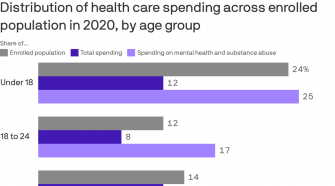Most of my meetings are on Zoom.
I’ve crossed that line that separates those whose primary interactions are face-to-face, to now having the majority of my professional conversations digitally and online.
This transition from in-person to Zoom has been driven somewhat by choice, and somewhat by circumstance.
As an advocate and internal consultant for low-residency and online learning on my campus, I push as many meetings on to Zoom as possible. The reason is that I want folks to get comfortable with the synchronous online platform that we use in our low-residency and online courses.
Zoom does not replace all my in-person campus meetings. There is still much to be gained from building relationships through in-person connections. Online Zoom meetings, however, are both more productive (no travel time) and egalitarian (as it is easier to break down status hierarchies in online meetings than when in-person).
For discussions with collaborators and partners who are not at my school, Zoom is an essential communications platform. The quality of the Zoom platform (clear audio and video, intuitive UI, etc.) is our best tool yet to combat the tyranny of distance.
During all these Zoom meetings, I’ve noticed a few unexpected quirks in the transition from face-to-face to online meetings.
One development that always surprises me is how frequently a Zoom meeting participant will not be on video. It is common for me to start a meeting with my webcam going, only to have to turn my webcam off if the person I am speaking with is not on video.
Sometimes, larger Zoom meetings will have everyone with an active webcam, save one or two non-video participants.
Does the same thing happen to you?
I’ve been thinking about the frequency, causes, and meaning of non-Video Zoom discussions. Here three ideas about what is going on.
#1 – Preference:
Some people prefer to not turn on their webcam during web-based meetings. This behavior has nothing to do with Zoom. They will equally opt-out of webcams on Connect, WebEx, and Shindig meetings.
Sometimes a web-meeting participant does not want video because of the circumstances in which the meeting is occurring. They may be working at home due to illness or a sick kid and do not feel as if they are dressed professionally for a video meeting.
Other people dislike video sessions and are much more comfortable with voice-only conversations.
#2 – Absence:
Sometimes, the people that I try to Zoom with have computers that do not have webcams. This scenario occurs more often than we might expect.
Some of the work that I do is with colleagues who work for university-affiliated hospitals. The laptops issued to hospital employees often lack webcams. I had thought that this might be a HIPAA issue, but Zoom is HIPAA compliant.
What seems to be going on with hospital laptops lacking webcams is that there is some concern with patient privacy, and lots of concern with costs. Maybe some can provide more information?
University-affiliated hospital people aren’t the only ones to lack webcam-enabled laptops. To my surprise, there seems to be a not-insignificant number of university-issued laptops (or laptops that academics have purchased on their own) that do not have a webcam.
Are you one of these non-webcam academics.
#3- Failure:
The third reason for video-free Zoom meetings is failure. One of the attributes that I love most about Zoom is that these Webcam failures are rare.
With other synchronous online learning and meeting platforms that I’ve used (and I’ve used them all), the failure to initiate the webcam was a frequent occurrence.
It was a rare synchronous class or meeting where every participant got their webcam and microphone working. Sometimes the video would not work. Sometimes the audio would not connect. Driver conflicts and incompatible devices were frequent.
Zoom seems to be significantly more robust in getting webcams and microphones to work. The straightforward UI of the platform for starting video and audio certainly helps.
But webcam failures still occur. In my experience, the problem is usually with external webcams. Technical issues can get magnified when the Zoom participant is trying to plug their webcam in through a USB hub.
For whatever reason a non-video Zoom meeting occurs – preference, absence, or choice – the quality of that Zoom discussion will suffer.
Video adds something important to both synchronous online classes and meetings. The non-verbal communication that video enables draws the participants of the Zoom conversation closer together.
The ability to teach using synchronous video platforms, such as Zoom, is emerging as a critical skill for educators. Effective online synchronous practices are not the same as effective face-to-face teaching practices.
Pairing faculty with instructional designers in designing synchronous online classes is an investment that programs and schools will make if they prioritize quality.
For all of us, both those who teach online and those who participate in online meetings, getting comfortable with online teaching/meeting platforms such as Zoom is an important skill.
At the very least, all of us should do whatever is necessary to make sure that our webcams are working and turned on during web meetings.
What proportion of your meetings (and classes) now happen online?
Are you one of those no-webcam Zoom folks?















